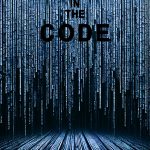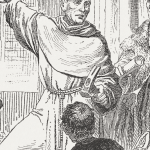Land of the Bible: City of David
In this series, we will explore some of the most significant sites located in the City of David which lies outside the walls of the Old City, as well as the Jewish Quarter. Additionally, we will take a closer look at the extensive excavations situated to the south and southeast of the Temple Mount.
Ep. 1 The City of David
We begin the tour of the City of David on the acropolis of the city standing above what many believe to be the foundations of David’s Royal Palace. The view down the slopes of the city illustrates David’s gaze on that fateful night described in 2 Samuel 11 (his sin with Bathsheba).
A view east to the Arab village of Silwan exemplifies what the OT City of David must have looked like. That village in Biblical times was a cemetery and an abundance of tombs have been uncovered there and many families have incorporated those tombs into their houses, with the roof one house becoming the “front yard” of the house above. The top of the eastern hill was the Mount of Shame where Solomon built temples for his pagan wives (1 Kings 11:7-8).
You will see Area G, which has uncovered a large stepped structure that probably supported the palace above from where we just walked in the video. Houses from the First Temple Period were later built into the wall and such mundane features of life as a staircase to the flat roof and a toilet can be seen.
A view east to the Arab village of Silwan exemplifies what the OT City of David must have looked like. That village in Biblical times was a cemetery and an abundance of tombs have been uncovered there and many families have incorporated those tombs into their houses, with the roof one house becoming the “front yard” of the house above. The top of the eastern hill was the Mount of Shame where Solomon built temples for his pagan wives (1 Kings 11:7-8).
You will see Area G, which has uncovered a large stepped structure that probably supported the palace above from where we just walked in the video. Houses from the First Temple Period were later built into the wall and such mundane features of life as a staircase to the flat roof and a toilet can be seen.
Ep. 2 Hezekiah's Tunnel
The water system of ancient Jerusalem centered around access to the Gihon Spring at the eastern base of the Canaanite city of Jebus, later called the City of David. We will walk down the natural tunnel that the Jebusites and Jerusalemites used to access the spring. Arriving at a vertical shaft that Joab may have climbed in 2 Sam 5:6-8, although the complexity of the installation, even during the Jebusite period, cautions against dogmatism that the shaft is the tsinoor in that passage.
An inscription, written in archaic Hebrew, was discovered in the late 19th century. It's found about fifty feet before the end of the tunnel. It was hacked out by the Turkish authorities and is displayed in the Istanbul Museum. It describes how the tunnelers started at both ends and met in the middle. Many questions about how they did it (e.g., why the route, how long it took, etc.) have never been answered to the satisfaction of all scholars.
An inscription, written in archaic Hebrew, was discovered in the late 19th century. It's found about fifty feet before the end of the tunnel. It was hacked out by the Turkish authorities and is displayed in the Istanbul Museum. It describes how the tunnelers started at both ends and met in the middle. Many questions about how they did it (e.g., why the route, how long it took, etc.) have never been answered to the satisfaction of all scholars.
Ep. 3 The Street to Siloam
The Street to Siloam is the street that led from the Siloam Pool north to the area of the Western Wall and dates from the first century. It is still being excavated and access to it is entirely underground.
Ep. 4 Pool of Siloam
The water that emerges from the tunnel gathers into a small pool that was incorporated into the Church of the Pool of Siloam in Byzantine times. The water exits from the pool into the Kings Garden to the south. The geography of this area is interestingly described in Neh 3:15: “He also repaired the wall of the Pool of Siloam, by the King's Garden, as far as the steps going down from the City of David.” Evidently, the connection of the spring, the tunnel, and the pool had been forgotten about during the 2nd Temple Period.
In the last decade, a much larger pool for Jewish ritual bathing before 70AD has been uncovered, but only the northern end has been exposed, due to the rest of the land being owned by the Greek Orthodox Church. This would have been the Pool of Siloam to which Jesus sent the blind man to wash in John 9.
In the last decade, a much larger pool for Jewish ritual bathing before 70AD has been uncovered, but only the northern end has been exposed, due to the rest of the land being owned by the Greek Orthodox Church. This would have been the Pool of Siloam to which Jesus sent the blind man to wash in John 9.
Ep. 5 The Royal Tombs
Leaving the Pool of Siloam and walking up the staircase we will come to the remains of the excavations by Raymond Weill who concluded that this was the area of the Royal Tombs spoken about in Nehemiah 3:15-16. There are remains of tombs in the immediate area. The two large barrel vaults may be the tombs of David and Solomon, although many archeologists doubt this.
The Biblical reference to Uzziah’s tomb which has been found across the valley in Silwan is 2 Chron 26:23. The inscription on the tomb indicates it was a secondary burial of Uzziah’s bones.
Other discoveries included the Theodotus Inscription that was in a synagogue– possibly the Synagogue of the Freedmen in Acts 6:9, originally located in the Rockefeller Museum.
The round base of a structure down the slopes of the city was identified by Weill as the Tower of Siloam mentioned in Luke 13:1-4. A more mundane identification is that it was a columbarium or dovecote.
The Biblical reference to Uzziah’s tomb which has been found across the valley in Silwan is 2 Chron 26:23. The inscription on the tomb indicates it was a secondary burial of Uzziah’s bones.
Other discoveries included the Theodotus Inscription that was in a synagogue– possibly the Synagogue of the Freedmen in Acts 6:9, originally located in the Rockefeller Museum.
The round base of a structure down the slopes of the city was identified by Weill as the Tower of Siloam mentioned in Luke 13:1-4. A more mundane identification is that it was a columbarium or dovecote.
Ep. 6 Atop Hezekiah's Tunnel
On the eastern slope of the City of David, the steep situation of the city and the depth of the Kidron Valley can be seen. This illustrates the value of having the water flow underground to the western side of the city through the Siloam or Hezekiah’s Tunnel. “He made the pool and the conduit and brought water into the city” (2 Ki. 20:20). The point where the group is standing is directly above the meeting place where the workers met when digging the tunnel below.
Ep. 7 Davidson Museum
This modern structure, built in the basement of an Umayyad Moslem building of the 8th century, presents two films and artifacts explaining the archaeology and history of the area to the south and southeast of the Temple Mount.
Ep. 8 1st Century Street Part 1
Dozens of mikvaot, ritual immersion baths, were discovered in this area, used by Jewish pilgrims before ascending the Temple. The stones of the street along the southwestern side of the Temple are from the 1st century. They reflect the damage inflicted by the huge ashlars as they were thrown down by the Romans. A Hebrew inscription from Isaiah was likely written by a Jewish pilgrim in the 4th cent AD, indicating the ground level at that time.
Ep. 9 1st Century Street Part 2
In this video, small shops located on both sides of the street can be seen. Facing south the shops on the right were in the base of a huge staircase. They emerged from the projection on the wall called “Robinson’s Arch” which then turned south before reaching the street. Originally thought to support a bridge, the consensus now is that people walked under the monumental staircase.
At the southwestern corner were found stones which indicated that a trumpeter stood on the “pinnacle” above. The inscription found in the rubble reveals this clearly (“for the place of the trumpeting”). This may have been the pinnacle mentioned in the temptation of Jesus.
At the southwestern corner were found stones which indicated that a trumpeter stood on the “pinnacle” above. The inscription found in the rubble reveals this clearly (“for the place of the trumpeting”). This may have been the pinnacle mentioned in the temptation of Jesus.
Ep. 10 Kidron Valley Tombs
On the west slope of the Kidron is a Muslim cemetery placed in front of the Eastern Gate, also called the Golden or Shushan Gate. Although the gate structure is later it is built on the earlier gate of Herod’s Temple.
The eastern slope of the Kidron is the slope of the Mount of Olives. where the most important Jewish cemetery in the world is found. The ancient tombs date from the Hellenistic Period and were there in the time of Jesus.
The eastern slope of the Kidron is the slope of the Mount of Olives. where the most important Jewish cemetery in the world is found. The ancient tombs date from the Hellenistic Period and were there in the time of Jesus.
Ep. 11 The Cardo
After the Revolt of the Jews against Rome in 132-135 AD, the Emperor Hadrian rebuilt Jerusalem as a pagan city and named it “Aelia Capitolina.” He rebuilt the city in a Roman style with a major north-south street called the Cardo, the heart of the city. Crossing the Cardo is an east-west street called the Decumanus.
During Byzantine Period (325-638 AD) the street became a huge thoroughfare reaching from today’s Damascus Gate all the way down to the area of today’s Zion gate. What we see is the colonnaded western sidewalk and half of the street.
The northern section of the Cardo, dating to the Crusader times, was narrower and is preserved so well that it has been turned into a modern, upscale section of shops.
During Byzantine Period (325-638 AD) the street became a huge thoroughfare reaching from today’s Damascus Gate all the way down to the area of today’s Zion gate. What we see is the colonnaded western sidewalk and half of the street.
The northern section of the Cardo, dating to the Crusader times, was narrower and is preserved so well that it has been turned into a modern, upscale section of shops.
Ep. 12 The Hurva
This entire section is filmed in front of the rebuilt “Hurva” Synagogue in the heart of the Jewish Quarter of the Old City. This was also an opportunity to describe the two main divisions of the Jewish people: The Sephardim, tracing their ancestry to Spain, and the Ashkenazim, tracing their ancestry to Central and Eastern Europe.
This synagogue was the center of the Ashkenazic community in Jerusalem until it was destroyed in the 1948-49 War of Independence. It remained a ruin until it was recently rebuilt. The entire Jewish Quarter was destroyed and empty from 1948-1967 and has since 1967 been completely rebuilt.
This synagogue was the center of the Ashkenazic community in Jerusalem until it was destroyed in the 1948-49 War of Independence. It remained a ruin until it was recently rebuilt. The entire Jewish Quarter was destroyed and empty from 1948-1967 and has since 1967 been completely rebuilt.
Ep. 13 Southern Steps Part 1
This monumental staircase extended the width of the entire southern wall of the temple, but is broken by the later Crusader wall projecting south. The Crusader wall also breaks up the two “Huldah Gates” – the outline of one can be seen with a Latin inscription above it from the second century AD, used as part of the reconstruction of the wall. While it is popular to associate the two sets of gates with the prophetess Huldah, a more likely explanation is that the Hebrew “huldah” means “mole” and alludes to the subterranean tunnels that one entered through. These gates later emerge on the top of the Temple Mount.
Ep. 14 Southern Steps Part 2
The large complex that appears to break up the staircase is actually one of the buildings that housed a number of mikvaot that worshippers would have used right before entering the gates. The moving incident of Joseph and Mary bringing the 40 day old Jesus for his pidyon haben ceremony (redemption of the firstborn son, Exo 13:12; Num 3:11-13) and for her purification (Lev 12:6-8) is mentioned in Luke 2:22-24. Two people named Simeon and Anna blessed the young couple and spoke of their son’s Messiahship (Luke 2:25-38).
One can also envisage the adult Jesus teaching here and referring to his hearers as “white-washed tombs” which can be seen to the right on the Mount of Olives.
One can also envisage the adult Jesus teaching here and referring to his hearers as “white-washed tombs” which can be seen to the right on the Mount of Olives.
Ep. 15 Eastern Gate
Moslems blocked the gate and built a cemetery in front of it in medieval times. The gate is likely built on the earlier Herodian gate beneath. In 586 BC Ezekiel sees the kavod, the glory of Yahweh, depart from the city through this gate before the city’s destruction by the Babylonians. The kavod eventually going over the Mount of Olives to the east (Ezek 9-11). Ezekiel also sees that same “glory” return to the city from the Mount of Olives through this gate (Ezek 43:1-5).



